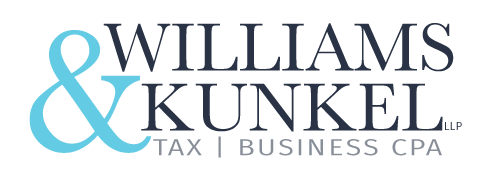With year-end rapidly approaching, this is the time to take steps to cut your 2019 business tax bill. (Flower Mound Tax Consulting: Year-End Business Tips)
Establish tax-favored retirement plan
If your business doesn’t already have a retirement plan, now might be the time to take the dive. Our current tax rules allow for significant deductible contributions. For example, if you are self-employed and set up a SEP-IRA, you can contribute up to 20% of your self-employment earnings. A maximum contribution of $56,000 for 2019 is allowable. If you have your own corporation, up to 25% of your salary is available for contribution. A maximum contribution of $56,000 is allowable.
Other small business retirement plan options include the 401(k) plan, which can even be set up for just one person. The others include the defined benefit pension plan and the SIMPLE-IRA. Depending on your circumstances, these other types of plans may allow bigger deductible contributions.
The deadline for setting up a SEP-IRA for a sole proprietorship business and making the initial deductible contribution for the 2019 tax year is October 15, 2020 if you extend your 2019 return to that date. Other types of plans generally should be set up by December 31, 2019 if you want to make a deductible contribution for the 2019 tax year. The deadline for the contribution itself is the extended due date for your 2019 personal return.
However, to make a SIMPLE-IRA contribution for 2019, set up the plan by October 1 of this year. So, you’ll have to wait until next year if the SIMPLE-IRA option is appealing. And next year will be here before you know it.
Claim 100% first-year bonus depreciation for qualified asset additions
Thanks to the Tax Cuts and Job Act (TCJA), 100% first-year bonus depreciation is available for qualified new and used property that is acquired and placed in service in your business in calendar year 2019. Your business might be able to write off the entire cost of some or all of its 2019 asset additions on this year’s return. So, consider making additional acquisitions between now and year-end.
Cash in on generous Section 179 depreciation deductions
For qualifying property placed in service in tax years beginning in 2019, the TCJA increased the maximum Section 179 deduction to $1.02 million. The Section 179 deduction phase-out threshold amount went up to $2.55. The following additional beneficial changes were also made by the TCJA.
Property used for lodging
The TCJA removed the prior-law provision that disallowed Section 179 deductions for personal property used to furnish lodging. Examples of such property would apparently include furniture, kitchen appliances, lawn mowers. Also, it applies to other items for the living quarters of a lodging facility or in connection with a lodging facility such as a hotel, motel, apartment house, rental house or condo, or other facility where sleeping accommodations are available to rent.
Qualifying real property
As before the TCJA, you can claim Section 179 deductions as qualifying real property expenditures, up to the maximum annual Section 179 deduction allowance ($1.02 million for tax years beginning in 2019). There is no separate limit for qualifying real property expenditures, so Section 179 deductions claimed for real property reduce the maximum annual allowance dollar for dollar. Qualifying real property means any improvement to an interior portion of a nonresidential building, except for expenditures attributable to the enlargement of the building, any elevator or escalator, or the building’s internal structural framework.
The TCJA expanded the definition of real property eligible for the Section 179 deduction to include qualified expenditures for roofs, HVAC equipment, fire protection and alarm systems, and security systems for nonresidential real property. To qualify, these items must be placed in service after the nonresidential building has been placed in service.
First-year depreciation and future tax rates
The current federal income tax rates for both individuals and corporations are pretty low by historical standards. While claiming first-year 100% bonus depreciation and first-year Section 179 deductions will save current-year taxes, forgoing these first-year breaks and instead depreciating assets over their “normal” extended depreciation periods (for example, six years for autos and 39 years for most nonresidential real estate) could save you more in the long run — if tax rates go up.
The rates for 2020 will almost certainly be the same as this year’s rates — unless we have a new president after the 2020 election and that new president and the new Congress decide impose a retroactive tax increase for 2020. While that could happen, it has rarely been done and is probably unlikely. I hope. What might happen in 2021 and beyond is anybody’s guess.
On the other hand, if we don’t have a new president after next year’s election, the current favorable tax rates under the TCJA will most likely last through 2025.
Key Point: The good news is you can extend your 2019 return until well into next year, and see how the politics appear to be shaking out. So, you would have some time to figure out exactly what to do on this year’s return.
Time business income and deductions for tax savings
If you conduct your business using a pass-through entity — meaning a sole proprietorship, S corporation, LLC, or partnership — your shares of the business’s income and deductions are yours at your personal rates.
Assuming the current tax rates still apply in 2020, next year’s individual federal income rate brackets will be the same as this year’s — with modest bumps for inflation. In that case, the traditional strategy of deferring income into next year while accelerating deductible expenditures into this year makes sense if you expect to be in the same or lower tax bracket next year. Deferring income and accelerating deductions will, at a minimum, postpone part of your tax bill from 2019 until 2020.
On the other hand, if you expect to be in a higher tax bracket in 2020, take the opposite approach. Accelerate income into this year (if possible) and postpone deductible expenditures until 2020. That way, more income will be taxed at this year’s lower rate instead of next year’s higher rate.
If tax rates go up for 2021 and beyond, the standard income deferral strategy might not work next year. You might need to take the opposite approach and accelerate income from 2021 into 2020 to have a lower rate.
Call Williams & Kunkel CPA today in Flower Mound at 972-446-1040 to have a chat and find out how you can save money on your taxes as a real estate professional.
In addition, you can connect with us to receive updates throughout the business week by following us on Twitter or LinkedIn or liking us on Facebook.
Source: Market Watch

